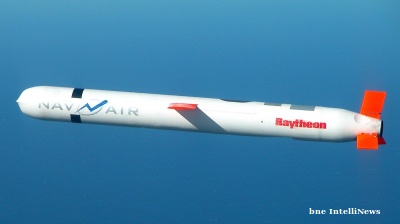Iran and Tajikistan have unveiled a combat drone factory in the Tajik capital of Dushanbe, Iran’s Student News Network reported on May 17.
The two Persian-speaking nations have pursued closer relations, including stronger defence cooperation, since the US and its allies exited their common neighbour Afghanistan in August last year, clearing the way for a Taliban takeover. Both Tehran and Dushanbe continue to demand the Pashtun Taliban allow representatives of all Afghanistan's ethnic groups join the country's government. In the meantime, Tajikistan has become concerned by expanding cross-border security threats posed by militants and terrorists based in northern Afghanistan.
The plant is to produce Iranian Abagil-2 unmanned aerial vehicles (UAVs).
“Today, we’ve reached a position that apart from fulfilling domestic needs, we can export military equipment to allies and friendly countries in order to strengthen security and sustain peace,” Iranian Military Chief of Staff Maj. Gen. Mohammad Bagheri said on a visit to Dushanbe to consult with Tajik defence officials and, among other things, open the drone factory.
Bagheri held a meeting with Tajik Minister of Defence Col. Gen. Sherali Mirzo. In the meeting, the two generals explored avenues for more bilateral defence cooperation and addressed the fight against terrorism in Central Asia.
Iran’s rapidly expanding fleet of military drones is a growing concern for rival powers in the Middle East and the US. In early March, the country’s Islamic Revolutionary Guard Corps (IRGC) announced an underground base for military drones. In doing so, the elite force warned that up to 60 drones could be simultaneously launched from Iran to hit targets in the region. In late February, Israel accused Iran of planning to arm drones supplied to ally Venezuela with precision-guided munitions. Early February saw Fitch Solutions conclude that recent drone attacks by the Iran-aligned Houthi rebels of Yemen on the UAE were unlikely to undermine long-term investment in the Emirates, but only because of the UAE’s sophisticated air defence system. Saudi Arabia, meanwhile, has bristled at the number of Houthi drone attacks that have hit the Kingdom.
Last September, the US Navy’s Middle East-based 5th Fleet said it was set to launch a new task force incorporating airborne, sailing and underwater drones following years of maritime attacks on oil tankers and other vessels linked to ongoing tensions with Iran. “We want to put more systems out in the maritime domain above, on and below the sea,” Vice Adm. Brad Cooper, who leads the 5th Fleet, was cited as saying, adding: “We want more eyes on what’s happening out there.”
In February, officials from Iran and Tajikistan pledged to increase bilateral trade to $500mn annually. Trade amounted to $121mn in 2021, marking a more than 100% increase from the $55mn recorded in 2020.
Tehran’s closer relations with Dushanbe come after several years during which there were tensions over attempts by Iran’s arch-rival in the Gulf Saudi Arabia to build up its influence in Tajikistan.
News

Gold price in Sri Lanka plunges
The sudden drop of around LKR20,000 in both 22- and 24-carat sovereigns adds to a volatile recent run for precious-metals pricing in the island nation: only days earlier, gold prices were noted to be climbing.

Mongolia’s PM ousted as party infighting topples government
Right to challenge sacking means battle may not be over. Observer says confrontation is linked to desire for control of country’s vast coal resources.

Ex-chairman of Istanbul-listed Sisecam hit with travel ban in Can Holding investigation
Company is controlled by "Ataturk" bank Isbank, which has previously been in the crosshairs of Turkish president Erdogan.

Ghana’s dormant TOR refinery to restart crude operations by October-end
Ghana has long struggled to translate its crude output into refined fuel security. Successive governments have pledged to revive TOR, which has faced years of debt, mismanagement, and technical breakdowns.




